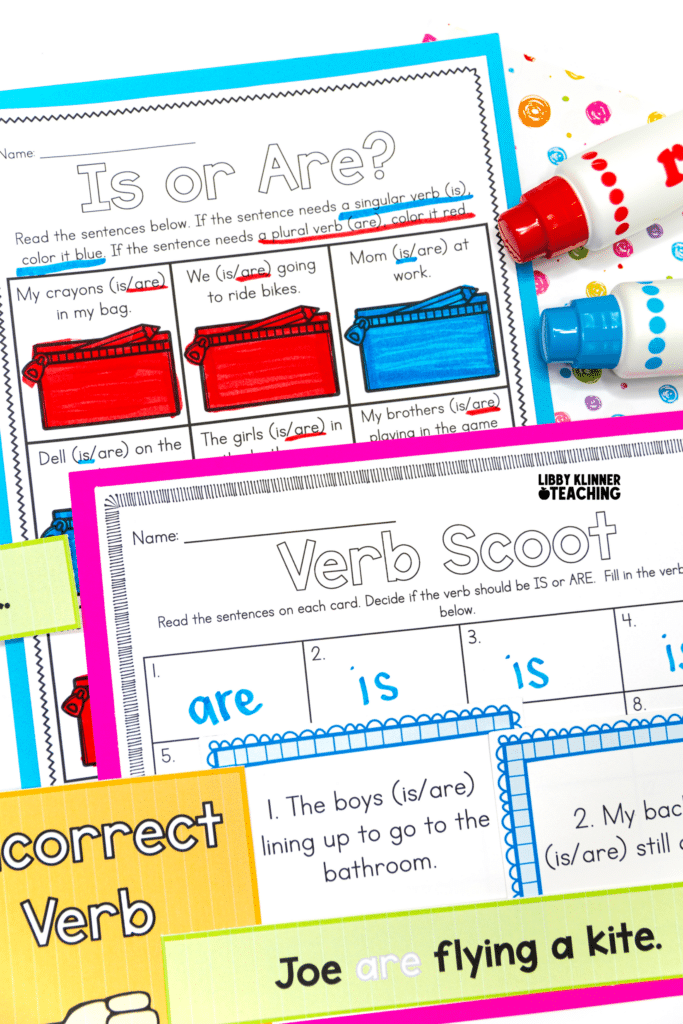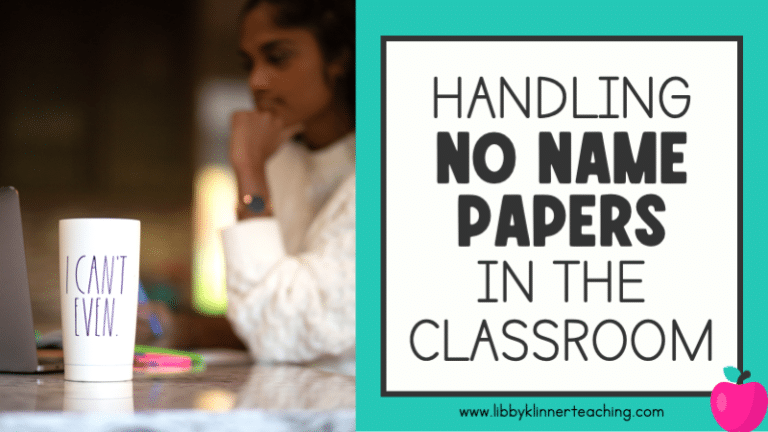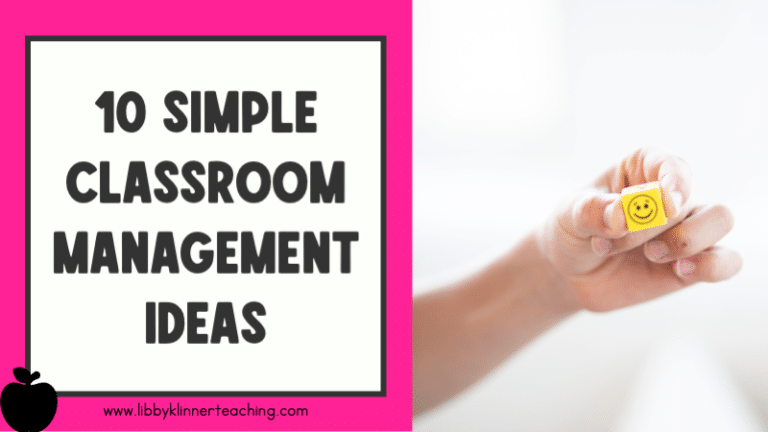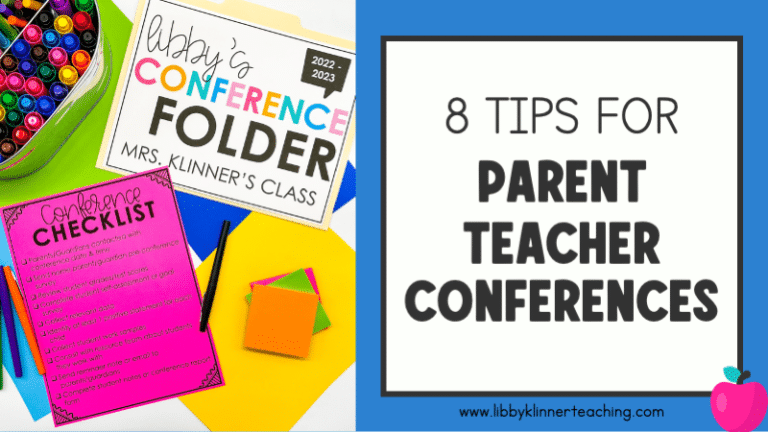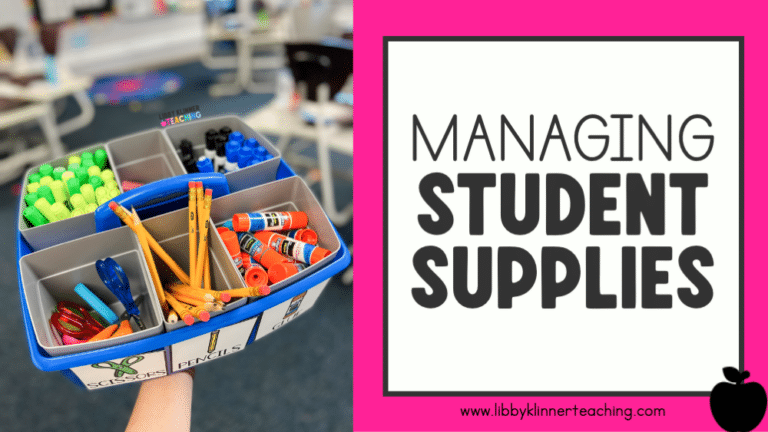Fun and Effective Subject-Verb Agreement Activities for First Graders

In the early elementary grades, teaching subject-verb agreement can seem like a tricky task. I am here to talk about subject-verb agreement activities that can make it an engaging adventure instead. Who doesn’t love a good adventure? Like all good adventures, you need to start with some foundational tools and understanding in order to be successful. So, let’s explore different activities that can pave the way for understanding subject-verb agreement. You will find that it can be easy – for you and your students – if you use subject-verb agreement activities designed to make learning both engaging and fun.
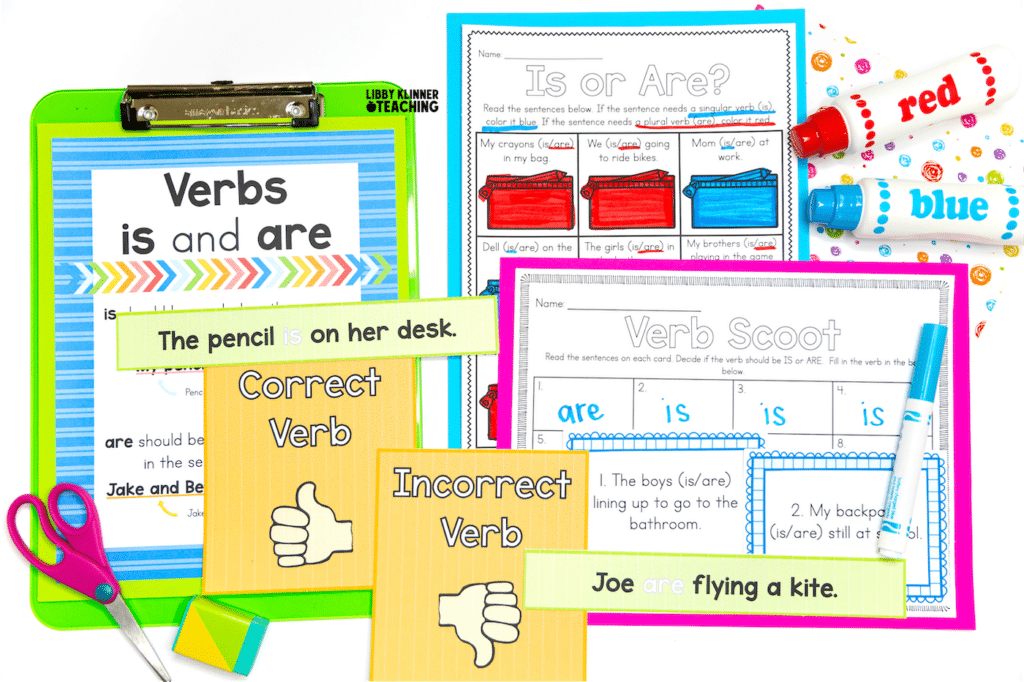
Why is subject-verb agreement important?
Subject-verb agreement is the best way to make sure your spoken or written language is going to be clearly understood. If you use a plural verb with a single subject, you leave your listener to wonder if they misheard you or if you forgot something. They may even question your intelligence or if you are a native English speaker. For example, if someone says “She are going to the store” you will wonder if “she” is referring to one person or a group of people. Similarly, if you say “We is going to the store” people will wonder if you are going alone or maybe taking your pet? If you say “He is going to the store” it gives a clear message that “he” is just one person on his way to buy some groceries.
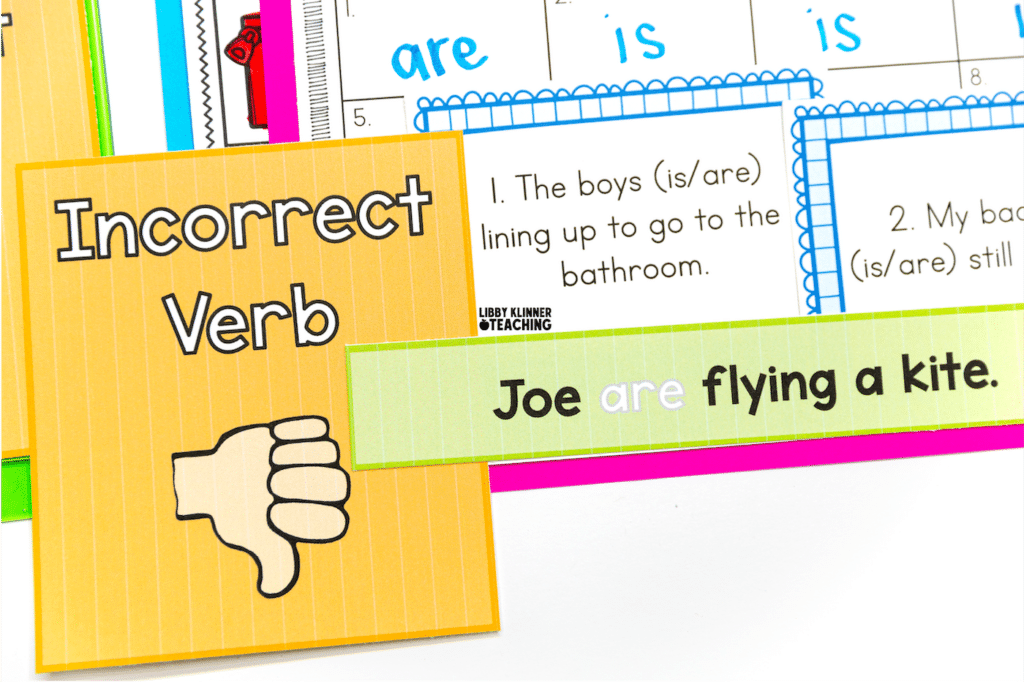
How do I introduce subject-verb agreement?
I like to introduce this concept by delving into the verbs “is” and “are.” These verbs are familiar words that young learners encounter regularly, so they make the perfect starting point for our subject-verb agreement adventure. You also get a lot of return on investment by starting with “is” and “are” because it is difficult to have a conversation without using them, and it is a glaring mistake when someone uses them incorrectly.
I have four main subject-verb agreement activities I use to lay the foundation for subject-verb agreement learning. You can use one or two of them if you like, but I think they have more impact when combined into a mini unit. Together they provide many different modalities and experiences for learning the same information, a perfect way to focus your class and create lasting learning.
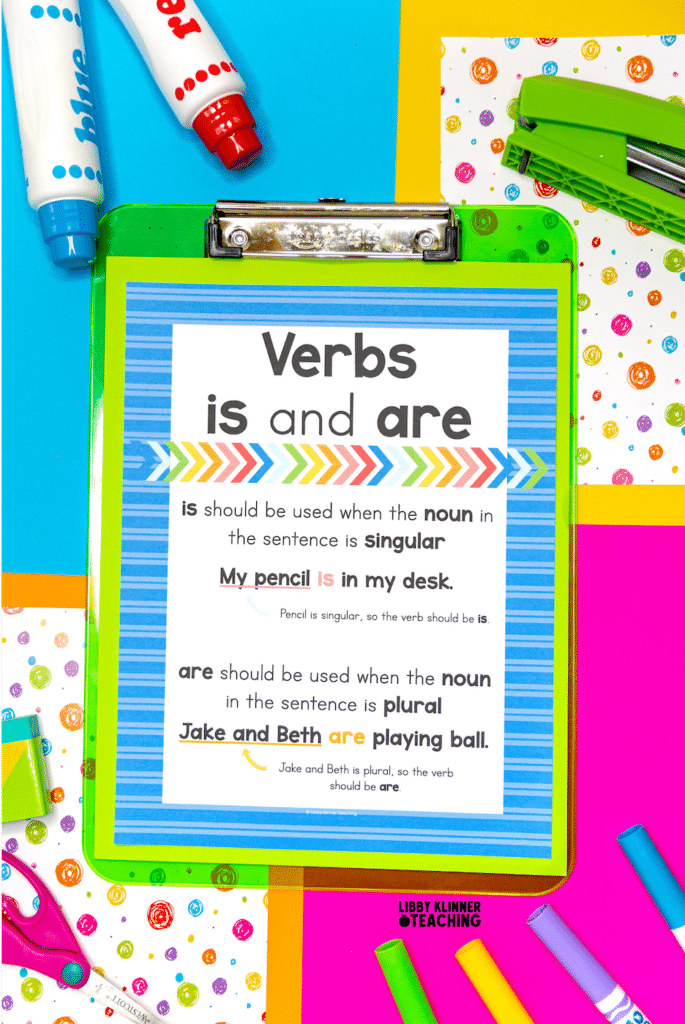
Informational Poster
Explaining the rules to follow is the best way to start almost all grammar tasks. I display posters with “is” and “are” subject-verb agreement rules, you could also print them for your students to add to their interactive learning notebooks. Either way, students have them to refer back to as they do the other activities and throughout the year when they move on to other grammar activities.
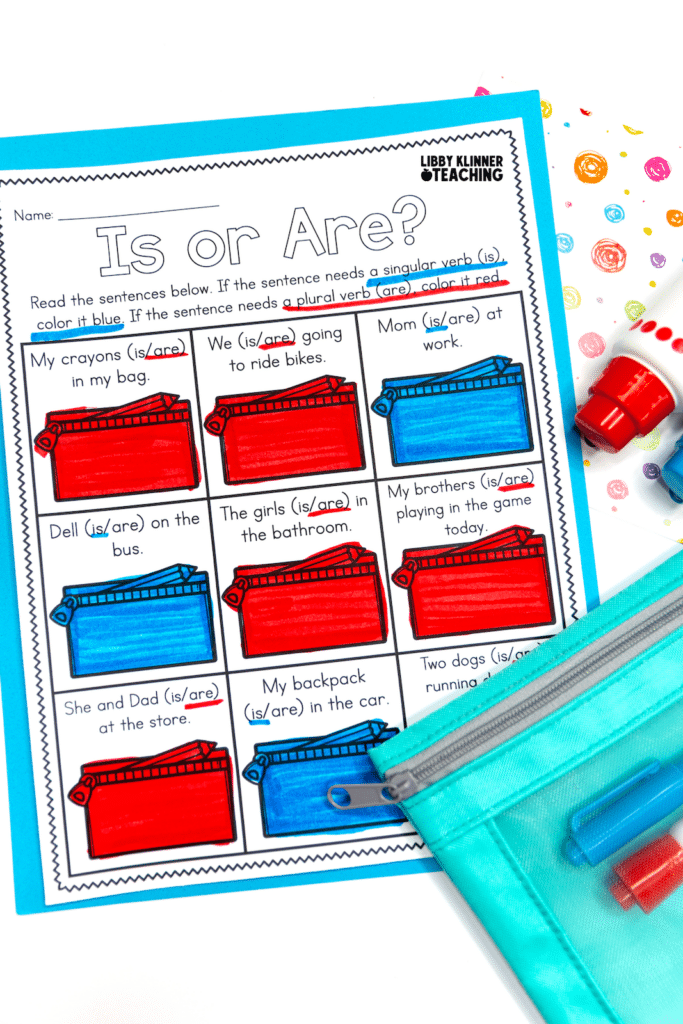
Subject-Verb Agreement Color Coding Worksheet
Worksheets can be an excellent group, independent, or center activity. In this case, students color code sentences to distinguish between “is” and “are.” This hands-on task reinforces their understanding and provides creative visual cues – a powerful learning experience for your visual learners. This worksheet can also be sent home as a carryover activity.
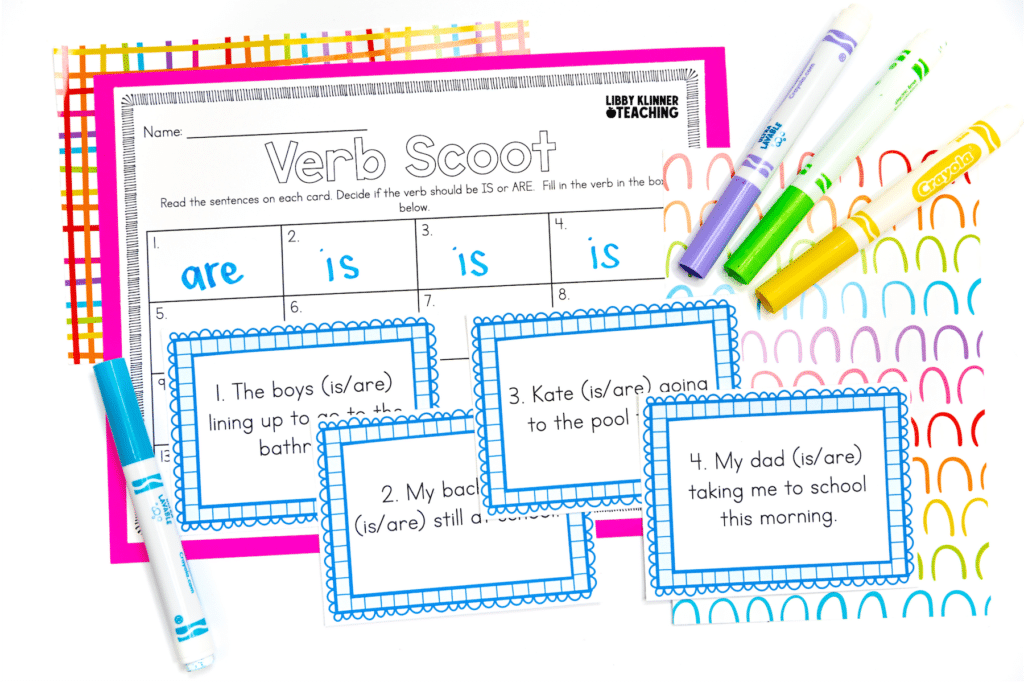
Subject-Verb Agreement Scoot Activity
This learning activity makes use of different spaces in your classroom as students “scoot” from sentence to sentence to identify the correct verb. This activity is versatile and can also be used as a ‘write the room’ activity or as task cards in learning centers. My students love it when they get to move around while completing a task – it helps all your kinesthetic learners fully solidify their grasp of subject-verb agreement. It can also provide a fun break from seated work – something we all appreciate.

Subject-Verb Agreement Sentence Strips
A final activity that my students enjoy is sorting subject-verb agreement sentence strips. Students read the strips, determine if the correct verb has been used, and then group the strips into correct or incorrect columns. This activity requires active participation from your students and promotes critical thinking as students must use the subject-verb agreement rules they have learned to sort strips into categories. Once again, this activity can be a nice break from worksheets or other seated work and can help students refocus their brains to be ready for more learning.
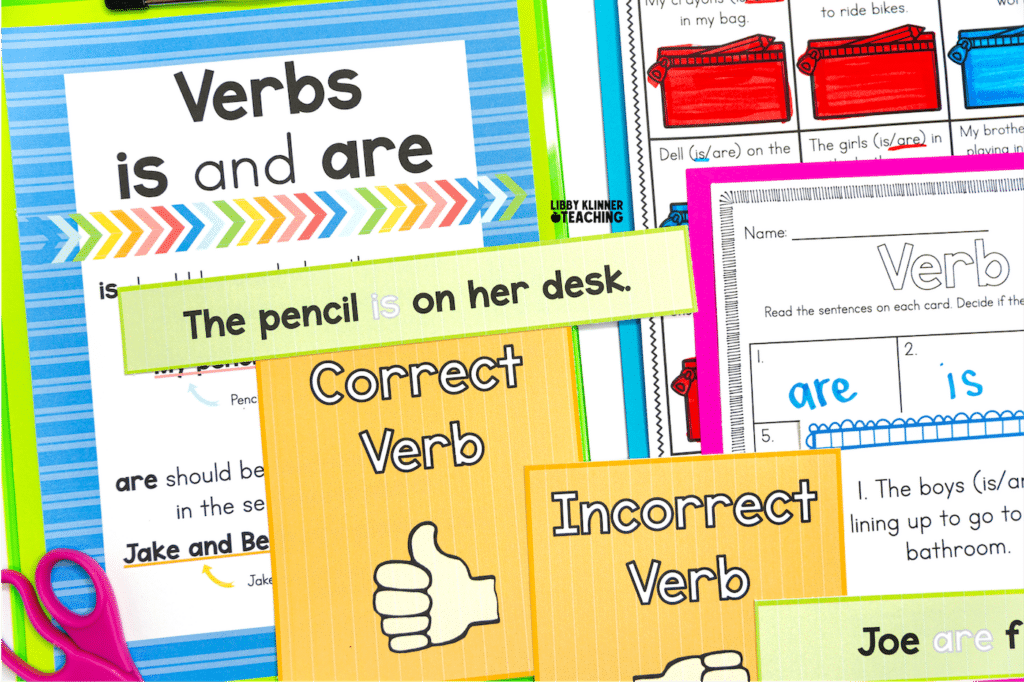
Subject-verb agreement lays the groundwork for clear and effective communication. By introducing young learners to foundational verbs like “is” and “are” through engaging activities, we pave the way for a deeper understanding of language structure. With these resources and activities, learning about subjects and verbs becomes an exciting voyage of discovery for first-grade students, setting them on the path to linguistic mastery.
Want more tips on teaching ELA concepts? Check out these blog posts!



Hi, I’m Libby!
I’m so happy you’re here! I love all things first grade – the curriculum, the content, and the sweet kiddos. I’m passionate about helping K-2 teachers save time in the classroom with fresh ideas and fun, engaging resources.

